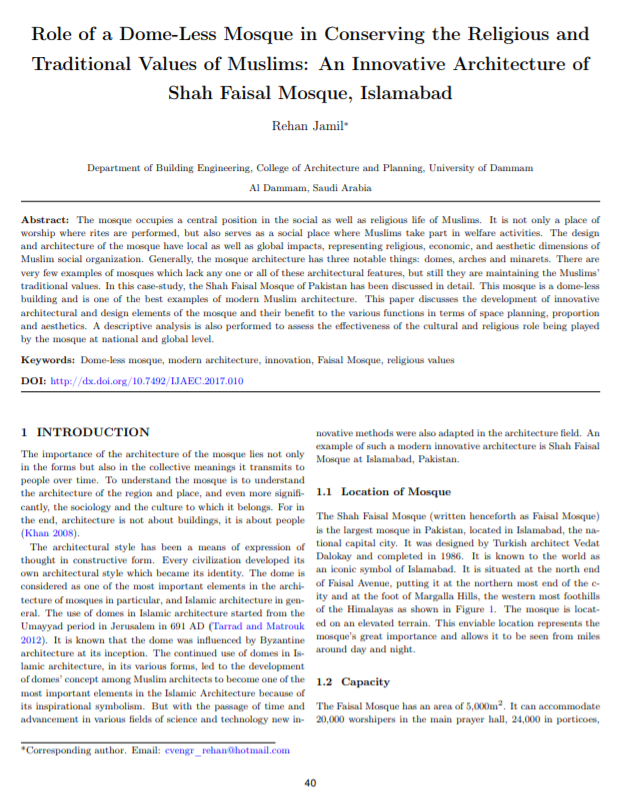
The mosque occupies a central position in the social as well as religious life of Muslims. It is not only a place of
worship where rites are performed, but also serves as a social place where Muslims take part in welfare activities. The design
and architecture of the mosque have local as well as global impacts, representing religious, economic, and aesthetic dimensions of
Muslim social organization. Generally, the mosque architecture has three notable things: domes, arches and minarets. There are
very few examples of mosques which lack any one or all of these architectural features, but still they are maintaining the Muslims’
traditional values. In this case-study, the Shah Faisal Mosque of Pakistan has been discussed in detail. This mosque is a dome-less
building and is one of the best examples of modern Muslim architecture. This paper discusses the development of innovative
architectural and design elements of the mosque and their benefit to the various functions in terms of space planning, proportion
and aesthetics. A descriptive analysis is also performed to assess the effectiveness of the cultural and religious role being played
by the mosque at national and global level.
Generally, the mosque architecture has three notable things: domes, arches and minarets. There are very few examples of mosques which lack any one or all of these architectural features, but still they are maintaining the Muslims’ traditional values. In this case-study, the Shah Faisal Mosque of Pakistan has been discussed in detail.
I agree to the terms outlined below:
You agree to upload and assign Mosqpedia Database the rights to use the content worldwide and in perpetuity across all current and future media platforms. Mosqpedia Database may edit, copy, adapt and translate your contribution.
The content will be distributed under the Creative Commons Attribution-Deed – Attribution-NonCommercial-NoDerivatives 4.0 International – Creative Commons
All data will be stored in line with data protection regulations.